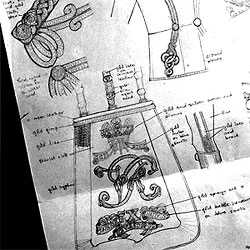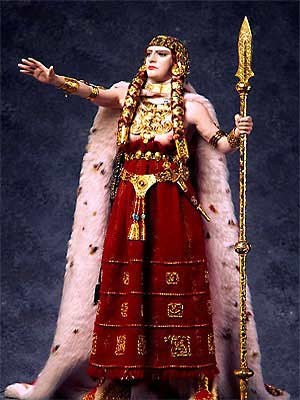Artist, Historian, Entertainer
For over five decades, artist and historian George Stuart has created more than 400 one-quarter life-size figures, some have been exhibited in the Smithsonian and private collections, to accompany his historical monologues. He has been capturing the essence of history's most famous and infamous personalities. Rarely have art and history been melded so exactly in works of such breathtaking realism.
Internationally renowned for their exquisite detail and historical accuracy, the George Stuart Historical Figures® represent important personalities of many historical periods.
George Stuart has also created groups of figures that illustrate French, English, Russian, Chinese, and Italian history, as well as other conquests of the Americas.
For a book and DVDs on the George Stuart Historical Figures® and monologues, go to our Museum Store located at the Museum. Books, magazines and video are also available on Etsy.
Entertaining Historical Monologs
Viewing a Group of Historical Figures gains special significance when accompanied by Mr. Stuart's informative, entertaining monologs about the personages and their times. Many of his monologues are now available on YouTube.

The Studio
In his Ojai, California studio Mr. Stuart continues to model Historical Figures in mixed media. At quarter life size, his portraits are closer to figurative art are often mistakenly called miniatures, figurines – or worse, dolls. Mr. Stuart is also very active in preservation and restoration of existing Figures.

Modeling a Historical Figure
Research
Once a subject is selected for an Historical Figure, George Stuart carefully studies the personality, contemporary texts, paintings drawings, anatomy references, even autopsy reports.

Planning
With the Historical Figure and its times understood, Stuart sketches how to best represent the Figure - clothing, position and demeanor. Accessories such as jewels, and weapons are selected and designed.

Skeleton
Figures are made of mixed media. Modeling begins with an articulated skeleton of iron wire sized to the best anatomical data. Heights can vary from Queen Victoria less than 5 feet tall to Abe Lincoln at nearly 6 ½ ft.

Bones and Muscle
The wire skeleton is carefully wrapped in clay tape to form bones. Cotton is added and modeled to form the muscles and shape.

Skin
Next a "skin" is sewn of felt and the Figure is covered. Muscles are articulated with needle and thread.

Hands
The hands are carefully sized and shaped in wire, often to hold objects or to portray a gesture. The final hands and feet are then sculpted in modeling material.

Head
A preformed plastic skull is shaped to the anatomy of the Figure. Then clay is modeled in several steps that results in the likeness of the Figure.

Hair and Scalp
Hair and scalp of Icelandic sheepskin is carefully modeled and applied. The hair is colored and modeled to the Figure's likeness.
 Assembly and Make Up
Assembly and Make Up
The body parts are assembled; the head and hands are carefully painted and colored. Undergarments are added in accordance with the times.

Clothing and Accessories
Finally outer garments, shoes, jewelry, weapons, accessories, etc. are set. The Figure is attached to a base.